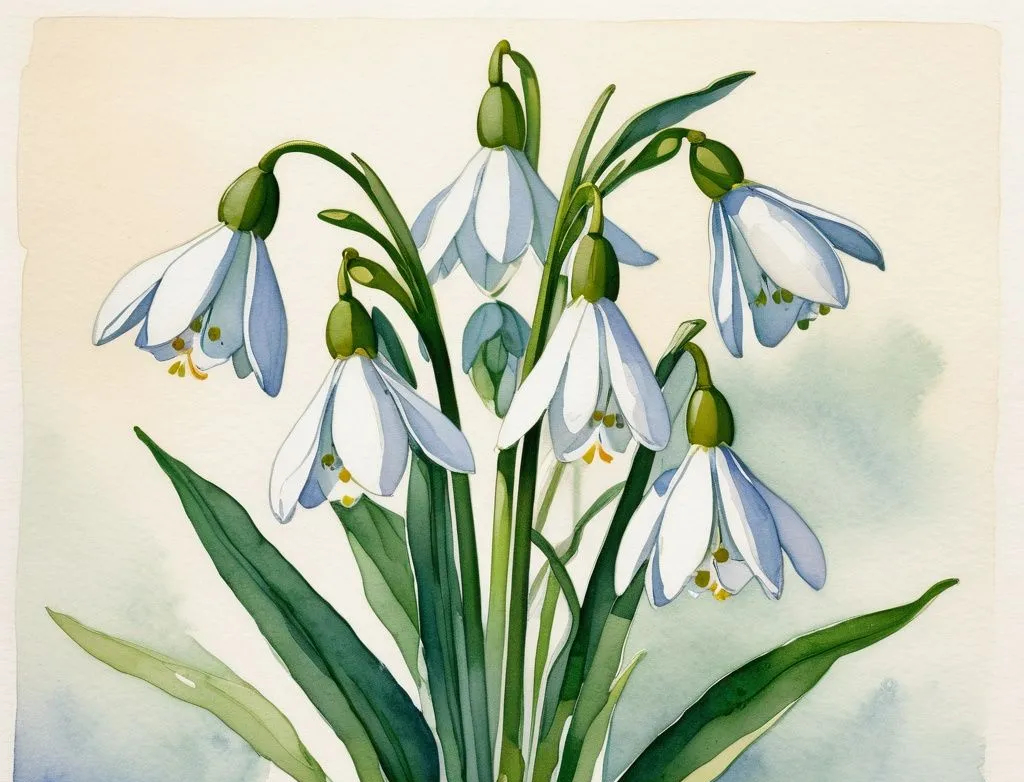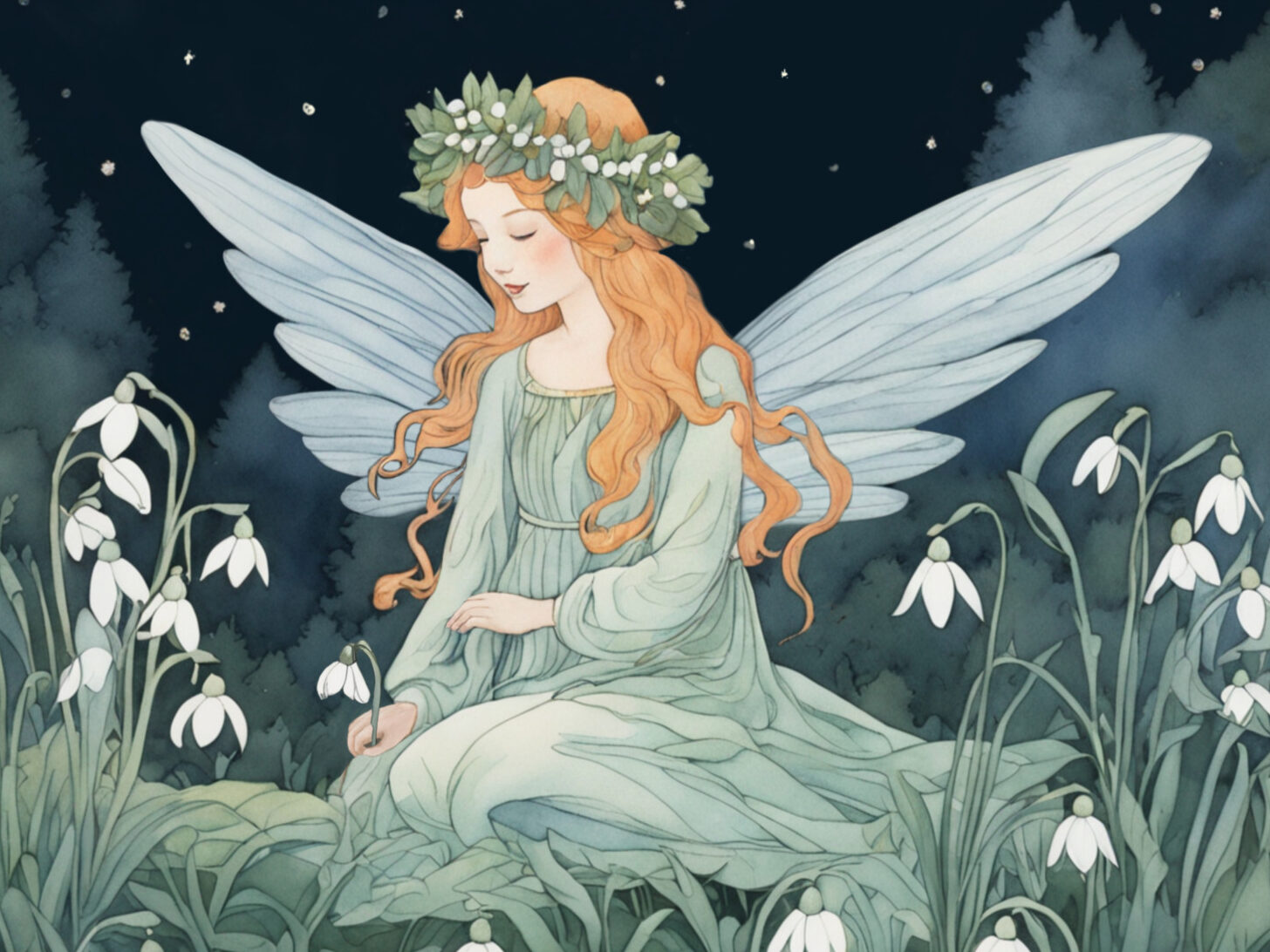Hamburg
Germany
Monday to Friday: 9AM - 7PM

Delicate yet powerful, the snowdrop is one of the first flowers to bloom as winter fades, bringing with it whispers of hope and renewal. Across cultures and legends, this tiny white blossom carries profound meaning — a symbol of light breaking through the darkness.
In Greek mythology, the snowdrop is linked to the story of Persephone, the goddess of spring and the underworld. When Hades took Persephone to his shadowy realm, the earth mourned her absence. Yet as a sign of her return — and the promise of spring — the snowdrop bloomed. Its pure white petals reflect Persephone’s resilience and the eternal cycle of life’s return.
Celtic folklore speaks of the snowdrop as a symbol of purity and protection. Associated with Brigid, the goddess of fertility and healing, these graceful blooms were seen as her blessing — a delicate yet powerful sign that winter’s grip was loosening. The Moldovan people tell of Lady Spring’s battle against the Winter Witch. During the struggle, Lady Spring’s finger was cut, and a single drop of her blood melted the snow, allowing the first snowdrop to bloom. This courageous little flower became a symbol of victory — light triumphing over cold and darkness.
A German folktale tells of Snow wandering the earth, seeking a color to wear. The flowers refused, fearing Snow’s cold touch — all except the humble snowdrop, which offered its pristine white petals. In gratitude, Snow promised to protect the snowdrop, allowing it to bloom even in icy conditions. Ever since, these two have been companions, side by side at winter’s end.
There’s a quiet magic about the snowdrop — a sense that it belongs to both this world and the one beyond. Emerging from frozen earth as if by miracle, the snowdrop has long been seen as a bridge between realms — a messenger traveling between life and death, shadow and light. In some folklore, it’s said that snowdrops bloom wherever angels have walked. Their silent arrival at the end of winter was believed to signal the presence of guardian spirits — a gentle reassurance that unseen forces are at work, quietly guiding life back to the surface.
Winter’s gloomy night withdrawn,
James Montgomery from ‘The Snow-Drop’ (1771-1854)
Lo! the young romantic Hours
Search the hill, the dale, the lawn,
To behold the snow-drop white
Start to light,
And shine in Flora’s desert bowers,
Beneath the vernal dawn,
The Morning Star of Flowers!
The snowdrop’s journey from frozen earth to delicate bloom mirrors the rhythm of inner growth. Its petals, still tightly closed as it emerges, slowly unfurl in the sunlight — a quiet reminder that transformation takes time and courage. In this way, the snowdrop speaks of perseverance, of the strength found in vulnerability. It reminds us that even after moments of hardship or loss, something new is always waiting to bloom. Let’s also not forget that it’s head is pointing down in a movement of reverence and humility. There is so much one can see in such a small flower if one is open to it!
In Christian tradition, snowdrops are often linked to the story of Adam and Eve’s exile from Eden. As they wandered a bleak and frozen world after the fall, an angel, filled with compassion, breathed upon falling snowflakes, transforming them into soft white flowers — the first snowdrops. “Take these,” the angel said, “as a sign of hope for you and your children.” Ever since, snowdrops have been seen as a reminder that even in hardship, hope blossoms.
Also within the Christian tradition the snowdrop is often called the ‘Candlemas Bell,’ blooming around the time of Candlemas on February 2nd. Candlemas marks the presentation of Jesus at the temple, 40 days after birth when Mary performs the traditional cleansing Jewish ritual in Jerusalem. This is a very symbolic day, when humanity receives a new inner light, hope, and new beginnings. Making the Snowdrops also a symbol for Mary. The snowdrop’s ability to break through frozen soil and even melt snow with its own warmth makes it a powerful symbol of resilience — they show up like tiny lamps shining in winter’s gloom.
Get to know our Snowdrop Fairy:

For centuries, people have turned to the snowdrop as a symbol of protection, comfort, and new beginnings. In some regions, it was customary to place snowdrops in doorways or windowsills to ward off misfortune and invite blessings into the home. In Romania, young girls would braid snowdrops into their hair during early spring festivals as a symbol of purity and the strength of new life. Elsewhere, it was believed that carrying a snowdrop with you would shield you from harm and offer guidance during uncertain times.
White rose in red rose-garden
Algernon Charles Swinburne from ‘Before the Mirror’ (1837-1909)
Is not so white;
Snowdrops that plead for pardon
And pine for fright
Because the hard East blow
Over their maiden rows
Grow not as this face grows from pale to bright.
Whether you see the snowdrop as a spiritual symbol, a botanical marvel, or simply a sign that spring is near, one truth remains: this small yet determined flower carries a message of courage, purity, and life’s enduring strength.
Even in the darkest moments of winter, the snowdrop reminds us that warmth is returning, and new beginnings are quietly unfolding beneath the frost. Perhaps that is its greatest gift — a silent yet powerful reminder that light will always find its way back to us.
Nor will I then thy modest grace forget,
William Wordsworth from ‘To a Snow-Drop’ (1770-1850)
Chaste Snow-drop, venturous harbringer
of Spring, And pensive monitor of fleeting years!
Lone Flower, hemmed in with snows and white as they
But hardier far, once more I see thee bend
Thy forehead, as if fearful to offend,
Like an unbidden guest.